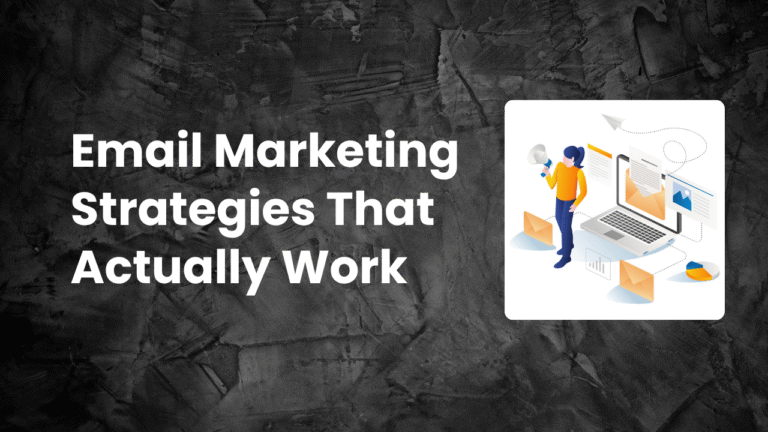Search Engine Optimization fails for most businesses. And not just a few. According to a 2023 report by Ahrefs, over 90.63% of content gets zero traffic from Google (Ahrefs). That means despite all the effort, tools, and tactics used by marketers and business owners, the vast majority of websites are invisible in search results. Even more staggering is that only 5.7% of pages rank in the top 10 of Google within a year of being published.
So, why does Search Engine Optimization fail for most businesses?
SEO isn’t broken. The approach is.
Far too many businesses jump into SEO without a clear understanding of how it works, who they are targeting, or how to sustain it. Others give up too early or follow outdated strategies that no longer work. The good news is that SEO doesn’t have to fail. When executed with the right mindset and methodology, SEO is one of the most cost-effective and powerful tools for online growth.
But let’s break down the real reasons it goes wrong—and how to fix them.
Lack of Clear SEO Strategy
Many businesses treat SEO like a checklist: keywords, blog post, publish, done. But SEO isn’t a one-time task. It’s a long-term strategy that requires planning, consistency, and constant refinement. Businesses that don’t define their goals, understand their audience, or map out a strategy often waste time producing content that doesn’t align with search intent.
A good SEO strategy answers questions like:
- What keywords are we targeting and why?
- Who is our audience and what are they searching for?
- How will we measure success?
- What kind of content will we create and how often?
Without a plan, SEO becomes a guessing game. And in a guessing game, most lose.
Focusing on the Wrong Keywords
Search engine optimization fails when businesses target keywords that are either too competitive or completely irrelevant. Ranking for “best shoes” might seem appealing, but unless you’re Nike, it’s probably not going to happen.
Instead, businesses should focus on long-tail keywords—phrases that are more specific and less competitive. Not only are these easier to rank for, but they often convert better because they reflect a clearer search intent.
For example, “best running shoes for flat feet” is much more targeted than just “running shoes,” and more likely to attract the right visitor.
Ignoring Search Intent
Search intent is the “why” behind a user’s query. Are they looking to buy? To compare? To learn? Many SEO campaigns fail because content doesn’t match what the user is actually looking for.
If someone searches “how to start a blog,” they likely want a step-by-step guide. If your page is just a list of blogging platforms, they’ll bounce quickly. Google notices that bounce, and down your rankings go.
Matching content to search intent is one of the most critical (and overlooked) parts of successful SEO.
Publishing Low-Quality Content
Content is king, but not all content wears the crown. Many businesses believe publishing anything is better than nothing. They churn out short, keyword-stuffed articles that offer little value. Google has made it clear: quality matters.
The Helpful Content Update emphasized rewarding content that is created for people, not just for rankings. If your content doesn’t answer questions, solve problems, or offer unique insights, it won’t perform well—no matter how optimized it is.
High-performing content is:
- Original
- Deeply informative
- Easy to read
- Well-structured
- Updated regularly
Neglecting Technical SEO
You can write the best article in the world, but if your site is slow, broken, or hard to navigate, users will leave before they even get to it. Technical SEO covers things like:
- Page speed
- Mobile-friendliness
- Secure HTTPS connection
- Proper indexing and crawlability
- Structured data (schema markup)
Businesses often overlook this side of SEO because it’s less visible and more complex. But search engines consider technical performance just as heavily as content quality.
Lack of Patience and Consistency
Search engine optimization is a long game. It can take months to see results, especially for new websites or highly competitive niches. But many businesses expect instant results. When they don’t see traffic spike in a few weeks, they assume SEO doesn’t work and abandon it.
Consistency is key. Regularly publishing optimized content, earning backlinks, improving your site, and refining your strategy leads to compounding results over time. Quitting too early is one of the top reasons SEO efforts fail.
Poor Link Building Practices
Backlinks are a key ranking factor. But not all backlinks are equal. Many businesses either ignore link building or use shady tactics like buying links or spamming blog comments. These practices may offer a short-term boost, but they often result in penalties from Google.
Effective link building focuses on:
- Creating content worth linking to
- Building genuine relationships in your industry
- Guest posting on reputable sites
- Earning mentions through PR or thought leadership
Good links build authority. Bad links can ruin it.
Not Measuring and Adapting
SEO isn’t set-it-and-forget-it. You have to track what’s working and adjust your approach. Yet many businesses don’t monitor key metrics like:
- Organic traffic
- Keyword rankings
- Bounce rate
- Conversion rate
- Time on page
Without this data, you’re flying blind.
Using tools like Google Analytics, Google Search Console, Ahrefs, or SEMrush can give you the insight needed to make data-driven decisions. Optimization means ongoing improvement.
Outdated Practices and Myths
SEO evolves. What worked in 2010 doesn’t work today. Some businesses still believe in tactics like keyword stuffing, duplicate content, or relying only on meta tags. These outdated practices not only fail—they often backfire.
Staying updated with Google’s algorithm changes, industry news, and current best practices is essential. SEO isn’t a static skill. It’s a dynamic discipline.
Conclusion
Search engine optimization fails for most businesses not because it’s ineffective, but because it’s misunderstood, mismanaged, or mishandled.
The truth is, SEO works. It’s working right now for millions of websites across every industry. But it takes time, commitment, and a smart, user-focused strategy. It takes adapting to change, investing in quality, and staying consistent.
If your SEO isn’t producing results, it might be time to step back, audit your current approach, and rethink your strategy.
Because when done right, SEO doesn’t just drive traffic.
It drives business growth.





